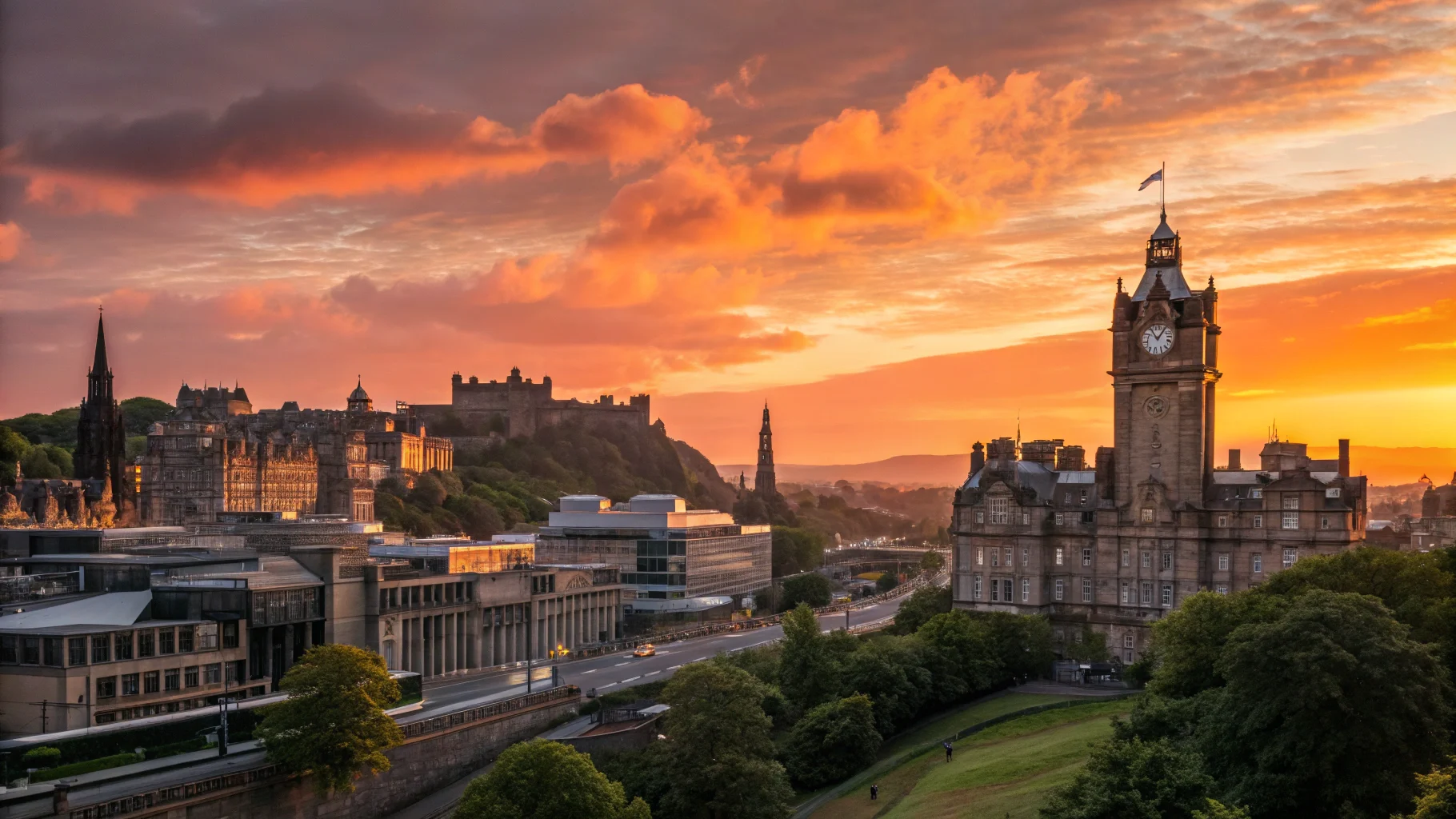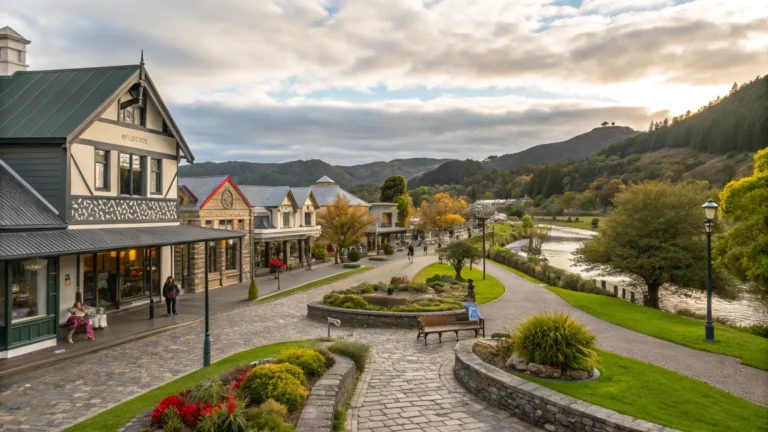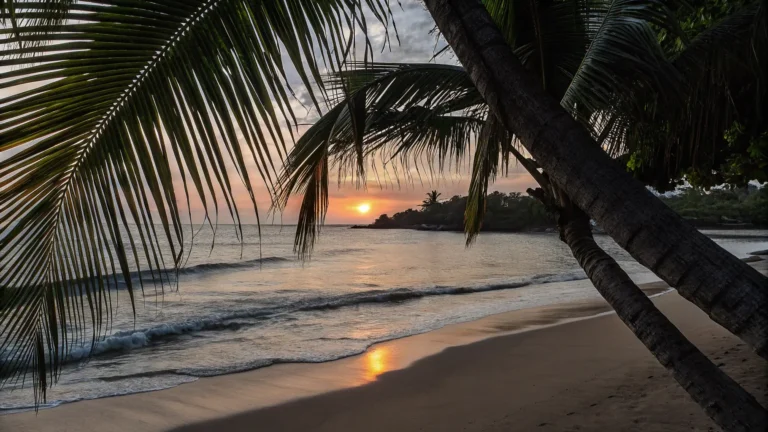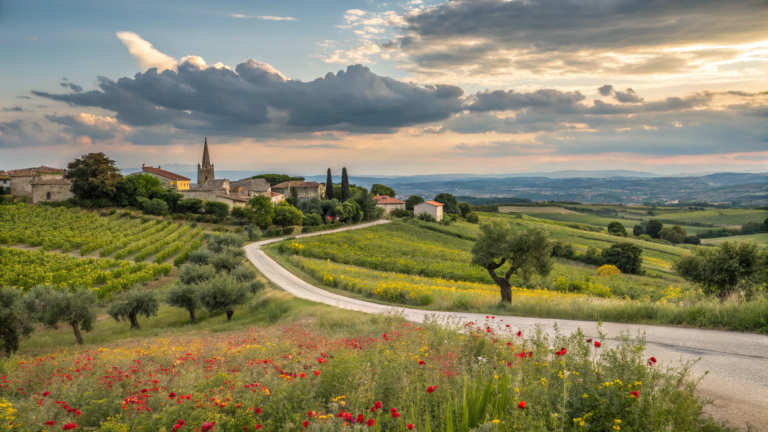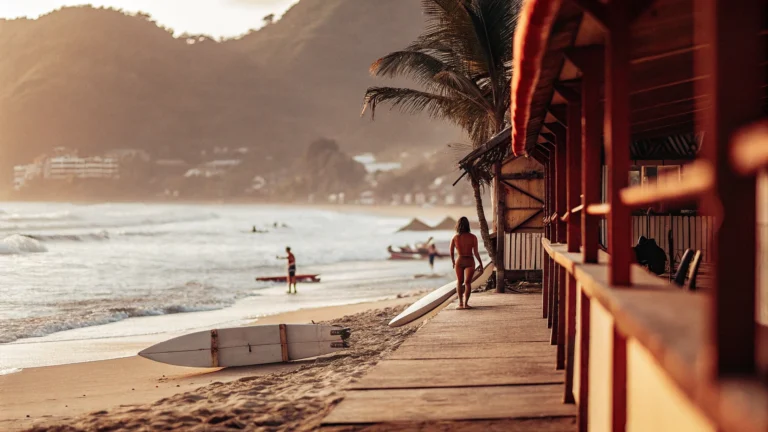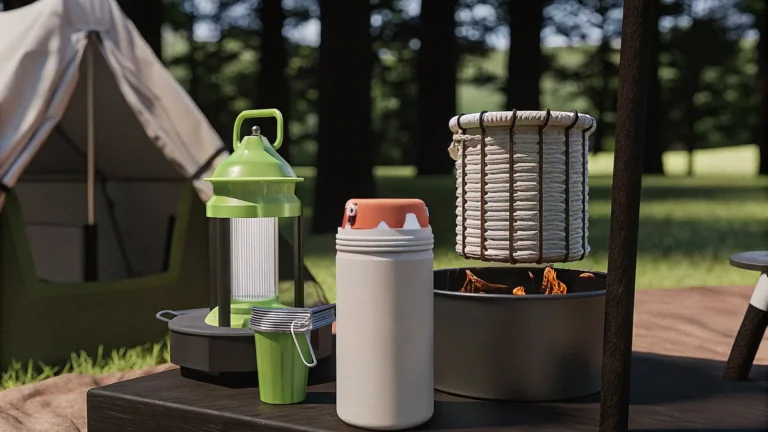Best Time to Go to Scotland? 3 Things Tourists Love Most
Last updated on May 27th, 2025 at 12:05 am
Picture me last October, standing ankle-deep in mud at Loch Katrine, rain pelting my face while I tried to get the “perfect” Highland photo. My husband was giving me that look – you know the one – while our soggy sandwiches turned into mush. But then the clouds parted for exactly thirty seconds, and golden light hit the water like something out of a fairy tale. That’s Scotland for you.
I’ve been dragging my family to Scotland for eight years now, and I can tell you this: timing your trip isn’t just important – it’s the difference between magical memories and wanting to catch the next flight home. After countless visits (including that disastrous March trip where we nearly froze to death in the Cairngorms), I’ve figured out exactly when Scotland shows off its best stuff.
There are three things that make people fall head-over-heels for Scotland, and each one has its sweet spot on the calendar. Let me save you from my early mistakes and show you when to experience Scotland at its absolute finest.
Scotland’s Weather: What Nobody Tells You
Forget what you’ve heard about Scottish weather being terrible. It’s not terrible – it’s just… dramatic. Really dramatic.
I remember checking the forecast for our first trip and seeing “light showers” for the entire week. What they didn’t mention was that between those showers, we’d get blazing sunshine, thick fog, and winds that nearly knocked us off our feet. All before lunch.
Scotland sits smack in the middle of Atlantic storm tracks, which means weather changes faster than your teenager’s mood. The good news? Those same Atlantic currents keep temperatures way milder than places at similar latitudes. Without the Gulf Stream, Edinburgh would feel more like northern Canada.
Here’s what each season actually feels like:
Spring (March-May): Think of a moody teenager. One day it’s gorgeous and sunny, the next it’s throwing a tantrum with hail and wind. March can still bite with cold, but April and May? Pure gold.
Summer (June-August): This is when Scotland puts on its Sunday best. Temperatures hit the mid-60s regularly, and you get nearly 18 hours of daylight in June. The downside? Everyone else figured this out too.
Autumn (September-November): My personal favorite season. September feels like summer’s relaxed older sibling – still warm but without the stress. October brings those postcard-perfect misty mornings that make every photo look professional.
Winter (December-February): Don’t let anyone scare you off winter Scotland. Yes, it’s cold and dark, but there’s something deeply cozy about warming up in a Highland pub after a brisk walk through frost-covered heather.
The Big Three: What Keeps People Coming Back
Festival Fever: Scotland’s Cultural Heart
Scotland doesn’t just host events – it throws parties that entire cities revolve around. And trust me, timing these wrong is like showing up to Christmas dinner on December 26th.
Edinburgh Festival Fringe (August)
Every August, Edinburgh basically becomes one giant theater. Street performers crowd every corner, pop-up venues spring up in basements and parking lots, and the entire city buzzes with creative energy.
I made the rookie mistake of booking our first Fringe trip only two weeks ahead. We ended up in a B&B forty minutes outside the city that smelled like boiled cabbage. The proprietor, a lovely Scottish lady named Morag, served us the same breakfast every morning: burnt toast, runny eggs, and tea strong enough to wake the dead. But you know what? Even staying in that questionable place, the Fringe was absolutely incredible.
Here’s what nobody mentions about August in Edinburgh: accommodation prices triple, restaurants get packed, and you’ll wait in line for everything. Book six months ahead if you want decent lodging under £200 a night.
Highland Games Season (May-September)
Want to see grown men in kilts throwing telephone poles? Highland Games are your answer. These aren’t tourist shows – they’re genuine community celebrations where locals take the competitions seriously.
The famous Braemar Gathering in September gets all the royal attention, but honestly? Some of my best Highland Games experiences happened at smaller events like the ones in Crieff or Dufftown. Less crowding, more authentic interactions with locals, and you can actually see the competitions without fighting for space.
Pro tip: Chat with the competitors. These folks train year-round for events like caber tossing and hammer throwing, and they love sharing stories about the traditions behind each sport.
Hogmanay (December 31st)
Scotland’s New Year celebration makes Times Square look like a quiet neighborhood gathering. Edinburgh’s street party draws 100,000+ people, but some of my most memorable Hogmanay experiences happened in tiny Highland villages where strangers invited us into their homes for midnight toasts.
Natural Beauty: Scotland’s Greatest Show
Scotland’s landscapes don’t need Instagram filters – they come naturally stunning. But your outdoor experience depends entirely on when you show up.
Hiking and Mountain Adventures (May-September)
I learned about Scottish mountain weather the hard way. March 2019, Ben Nevis, what I thought would be a challenging day hike. Three hours in, we hit snow. Not light dustings – proper knee-deep stuff that turned our “easy” route into something requiring crampons and ice axes we didn’t have.
The mountain rescue team (lovely folks, by the way) politely suggested we weren’t equipped for winter mountaineering. They were absolutely right.
Stick to May through September for serious hiking. Here’s my month-by-month breakdown:
- May: Perfect weather, long days, no bugs yet
- June: Warmest temperatures, nearly 18 hours of daylight
- July-August: Great weather but midges everywhere (especially west coast)
- September: Sweet spot – good weather, autumn colors, no insects
The midges deserve their own warning. These tiny biting flies swarm the Highlands and islands during summer evenings. I’ve seen grown adults running from clouds of these things. Pack good repellent and consider a midge net for your head if you’re camping.
Northern Lights Hunting (October-March)
Seeing the Aurora Borealis dance across Scottish skies ranks among my top travel experiences ever. But catching them requires patience, luck, and proper timing.
Your best shots come during the darkest months: November through February. I spent four nights in the Cairngorms in January 2021, checking aurora forecasts obsessively and setting alarms for 2 AM sky watches.
Night three, the sky exploded. Green curtains of light rippled overhead while we stood in snow-covered heather, breath forming clouds in the frigid air. My photos didn’t capture it properly (phone cameras struggle with aurora), but the memory stays crystal clear.
Best Northern Lights locations I’ve tested:
- Isle of Skye: Dramatic foregrounds, but weather’s unpredictable
- Cairngorms National Park: Consistent dark skies, easier access
- Galloway Forest Park: Officially designated Dark Sky Park
- Shetland Islands: Amazing displays but requires serious commitment
Castle and Loch Exploration
Scotland’s got around 2,000 castles and countless lochs, accessible year-round but each season offers different experiences.
Spring brings daffodils and bluebells around castle grounds. Summer means extended opening hours and boat trips on major lochs. Autumn delivers those moody, mist-shrouded castle photos everyone wants. Winter? Pure atmospheric magic, especially around ruins like Eilean Donan or Kilchurn Castle.
Food and Drink: Beyond Haggis and Whisky
Scottish cuisine gets unfairly dismissed, but this country produces incredible food when you know where and when to look.
Whisky Experiences (Year-Round with Seasonal Highlights)
You can tour distilleries any time, but visiting during harvest season (September-October) adds special meaning. Watching barley getting malted while tasting whisky aged longer than I’ve been alive creates connections between process and product.
My most memorable whisky experience happened at a tiny Speyside distillery in October 2020. The master distiller, a guy named Hamish who’d worked there forty years, walked us through their entire process while sharing drams of limited releases. We spent three hours there, learning about everything from water sources to barrel selection.
Winter whisky tours have their own appeal. Sipping single malt by a distillery fireplace while snow blankets the Highland landscape outside? That’s worth the cold journey.
Seasonal Scottish Produce
Scottish food reflects its seasons strongly:
Spring: New season lamb, wild garlic, early vegetables from kitchen gardens Summer: Fresh berries, herbs, amazing seafood as boats operate longer hours
Autumn: Game season starts (venison, grouse, pheasant), wild mushrooms, orchard fruits Winter: Hearty comfort foods, preserved items, root vegetables
The seafood alone justifies trips. Scottish langoustines, hand-dived scallops, and wild salmon are world-class. I had my best seafood meal ever at a tiny place in Tobermory – langoustines caught that morning, served simply with garlic butter and crusty bread. Simple perfection.
Monthly Planning Guide
March: Still chilly but landscapes start awakening. Good for budget travelers and avoiding crowds.
April: Sweet spot between winter’s bite and summer’s crowds. Daffodils bloom everywhere.
May: Nearly perfect. Great weather, reasonable prices, longer days without peak-season chaos.
June: Warmest month with incredibly long days. White nights phenomenon in northern Scotland.
July: Peak season begins. Great weather but crowds and midges arrive.
August: Festival madness. Electric atmosphere but expect premium prices for everything.
September: My favorite month. Excellent weather, stunning autumn colors, crowds thin out.
October: Unpredictable but can be gorgeous. Northern Lights season begins.
November: Fewer tourists, cozy pub culture, early Christmas markets.
December: Shortest days but magical winter atmosphere. Hogmanay preparations begin.
January-February: Coldest months but rock-bottom prices and authentic local experiences.
Regional Timing Differences
Highlands and Islands: Weather’s more extreme and ferry schedules matter. Stick to April-October for island hopping.
Central Scotland: More protected, milder climate. Edinburgh and Glasgow handle winter well.
Southern Scotland: Mildest region. Borders area works for shoulder-season visits when the north’s still harsh.
Real Talk About Costs
August prices will shock you. Hotels that charge £80 in February jump to £300+ during festival season. Restaurants add festival surcharges. Even parking gets expensive.
My budget breakdown by season:
- Spring/Autumn: Moderate prices, good value
- Summer: Premium pricing, especially August
- Winter: Bargain season with significant savings
Book August accommodations by March or consider staying outside Edinburgh and commuting in.
Packing Reality Check
Scotland’s weather reputation exists for good reasons. Pack like you’re going to four different climates because you probably are.
Essential items (learned through soggy experience):
- Waterproof jacket that actually works (test it first)
- Multiple layers including warm fleece
- Waterproof hiking boots (not just water-resistant)
- Warm hat, gloves, scarf (even in summer)
- Compact umbrella
I watched tourists shiver through Highland hikes in cotton clothing and sneakers. Don’t be those people.
The Bottom Line
Scotland’s magic isn’t seasonal – it’s constant. But your experience changes dramatically based on timing.
Want festival excitement and don’t mind crowds? August delivers. Prefer perfect hiking weather and reasonable costs? Try May or September. Dreaming of Northern Lights and cozy pub evenings? Embrace winter’s shorter days.
Those three things tourists love most – cultural celebrations, natural beauty, and food/drink experiences – exist year-round but peak at different times. Understanding these rhythms helps you plan trips that match your priorities instead of fighting against seasonal realities.
Scotland doesn’t compromise on anything – not weather, hospitality, or beauty. That intensity means incredible experiences regardless of when you visit, but proper timing transforms good trips into unforgettable ones.
What calls to you most about Scotland? The cultural energy, dramatic landscapes, or culinary traditions? Drop a comment below – I love swapping Scottish travel stories and helping folks plan their Highland adventures!

